Hedge Funds Making Billions from Ukraine Turmoil

By GEOPOLITICS101 - APRIL 18, 2023
Experts blame the organizations for exacerbating the food crisis by “betting on hunger”. Ten of the planet’s largest hedge funds made nearly $2 billion from the food-price spike that occurred after the start of Russia’s military offensive in Ukraine, The Guardian has reported.
The British newspaper cited a report by Greenpeace’s investigative journalism branch Unearthed and Lighthouse Reports, a journalism nonprofit.
Hedge funds are investment firms that buy and sell equities and commodities for profit.
According to the study, analysts examined the returns made by Societe Generale’s SG Trend Index for the first quarter of last year, both prior to the start of the conflict on February 24 last year, and immediately afterwards. The analysis focused on grains and soya beans. Calculations showed that the hedge funds in question made $1.9 billion in returns on these commodities, a much higher figure than the returns on them in the first quarter of any of the previous five years.
“Hedge funds helped inflate a price bubble, putting upward pressure on food prices… and this has affected hunger levels of the world’s poorest people… Hedge funds and financial speculators have made obscene profits by betting on hunger and exacerbating it. That cannot be right,” Olivier De Schutter, a UN special rapporteur on extreme poverty and human rights, said, commenting on the findings. He accused investors of intentionally “piling” into grains and commodities aiming solely to “capitalize on uncertainty and rising food prices.”
Analysts found that food companies have also profited from the crisis. Calculations showed that the globe’s 20 largest food companies made $53.5 billion in windfall profits in the last two years, first from rising food prices during the Covid-19 pandemic and then from last year’s spike amid the crisis in Ukraine.
“What we are witnessing is an enormous transfer of wealth to a few rich families that basically own the global food system, at a time when the majority of the world population is struggling to make ends meet,” Greenpeace International campaigner Davi Martins stated.
The prices of staple foods like wheat and fertilizers rose sharply following the start of the military operation, propelled by soaring energy costs as the globe feared for the future of Russia’s energy exports amid sanctions that followed the conflict. They have somewhat subsided later in the year, especially after the Ukraine grain deal was reached in mid-2022 that allowed the country’s agricultural products to be exported from Ukrainian ports despite the ongoing military action.
However, the situation is still turbulent due to deficiencies in the deal, which has so far failed to assist Russia with its own agricultural exports. Russia faces difficulties exporting its produce due to economic restrictions placed on the country. As a result, global food prices have not yet returned to 2021, pre-conflict levels, prompting the International Monetary Fund to warn last month that “many vulnerable countries still face heightened food insecurity.”
Analysts urged global regulators to introduce stricter rules for market speculation, including better transparency in the food market and restrictions on how big a position investors are allowed to take in this market.
RT is an autonomous, non-profit organization that is publicly financed from the budget of the Russian Federation. For more information, contact: pr***@rt**.ru.
You can actually participate in the global efforts to cripple the Deep State organized criminal cabal's ability for genocide, while enjoying healthcare freedom at the same time, by boycotting Big Pharma for good.

Revealed: Ukraine war makes Lords members richer through arms investments
Tory peers are among five House of Lords members with investments of at least £50,000 in BAE Systems
By OpenDemocracy - Adam Bychawski - 17 March 2022
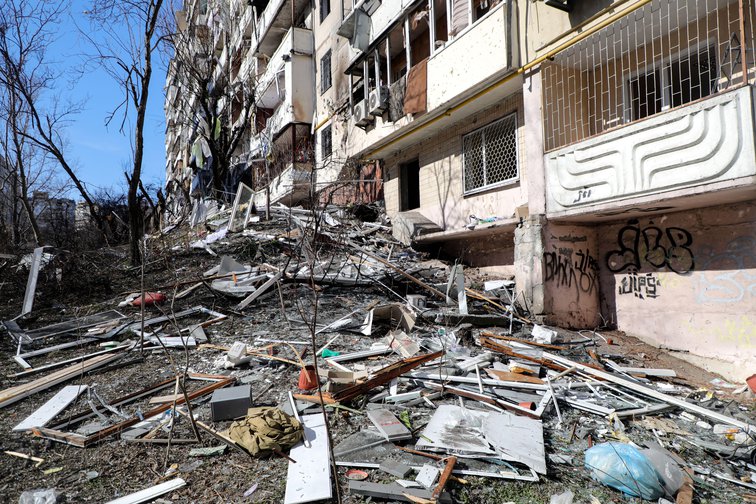
Russia’s invasion of Ukraine has made members of the UK House of Lords tens of thousands of pounds richer through their investments in arms firms, openDemocracy has found.
Tory peers Lord Glendonbrook, Viscount Eccles and Lord Sassoon, and unaffiliated peers Lord Lupton and Lord Gadhia, each own shares of at least £50,000 in British weapons manufacturer BAE Systems, according to the official register of interests.
BAE Systems’ share price has risen by 23% since the war began nearly four weeks ago, meaning each peer’s investment is likely to be worth at least £11,500 more than it was.
The firm is Britain’s biggest arms seller and sixth in the world overall. All but four of the world’s 20 biggest sellers of weapons have seen their share prices soar since the invasion began, with German firm Rheinmetall up by more than 60% and Italy’s Leonardo up by more than 44%.
The highest-earning arms manufacturers raked in £300bn from sales in 2020 – twice the entire gross domestic product of Ukraine – according to the Stockholm International Peace Research Institute (SIPRI).
Samuel Perlo-Freeman, research coordinator for the Campaign Against Arms Trade, said: “War is good for no one but arms dealers.”
He added that BAE Systems, “like other major world arms companies, are seeing their share prices soar in response to the war on Ukraine, as European countries prepare to massively rearm, doubling down on the very militarism that has created so much death and suffering in Ukraine, Yemen and elsewhere.”
Related story
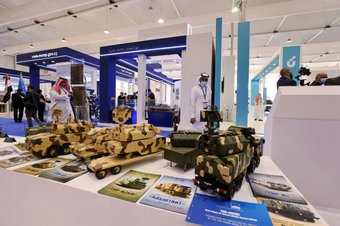
Exclusive: UK firms bankroll arms fair where Russia shows off weapons15 March 2022 | Adam Bychawski , Scott MasonBritish defence minister among guests as sanctioned Russian businesses flog weapons that are being used against Ukraine
Tens of thousands of people are thought to have died in the conflict, including as many as 20,000 civilians in the besieged city of Mariupol in the south of the country. Last week, a Mariupol maternity hospital was shelled, killing a pregnant woman and her unborn child. And on Wednesday, Ukraine accused Russia of bombing a theatre in the city, where more than 1,000 people had been sheltering, including children.
Some executives at the biggest arms companies have already told investors that they are anticipating a rise in profits this year as a result of the war.
The CEO of US company Raytheon Technologies, the world’s second-biggest arms dealer, told an earnings call in January that the situation presented “opportunities for international sales”.
“The tensions in Eastern Europe, the tensions in the South China Sea, all of those things are putting pressure on some of the defence spending over there. So I fully expect we’re going to see some benefit from it,” he said in response to a question from an investor.
Arms companies have cheered the announcement by the German chancellor last month that the country will raise its spending on defence to 2% of its economic output. Germany had long resisted pressure from NATO allies to increase its military budget as public support for pacifism has remained strong.
The CEO of Rheinmetall, Armin Papperger, told the Financial Times: “Some months ago people wanted to ban us, to say that this industry is a very bad industry, a very harmful industry. It’s a totally different world now.”
Patrice Caine, CEO of French arms firm Thales, also told investors earlier this month that the news was “positive” for defence companies including his own.
Some months ago people wanted to ban us, to say that this industry is a very bad industry... It’s a totally different world nowArmin Papperger, CEO of German arms firm Rheinmetall
Since the war began, governments across the world have pledged either to send arms to Ukraine or to increase their own spend on arms. The European Union has announced it will purchase and deliver €450m (£375m) of arms to Ukraine, while the US has offered $350m (£265m) in military aid.
The UK has sent 2,000 anti-tank weapons to Ukraine since Russia invaded and chancellor Rishi Sunak has faced calls to increase defence spending in his Spring Budget.
BAE Systems is already set to supply £3.4bn worth of munitions to the Ministry of Defence as part of a contract awarded in 2020.
When announcing its 2021 results last month, the company said that the “uncertain global environment” and “complex threats” facing the world would boost its business this year.
BAE Systems sold £24bn worth of arms in 2020, according to SIPRI. Last week, the UK firm sponsored an arms fair organised by the Saudi regime, where several sanctioned Russian state arms companies promoted weapons that have been used against Ukraine.
Roy Isbister, of the arms unit at 'peace-building' NGO Saferworld, said: “The war in Ukraine appears to be turbo-charging a vicious cycle where conflict leads to greater demand for arms, leads to heighten tensions, leads to further conflict, and so on. This cycle of violence ultimately benefits no one more than the arms companies and their shareholders, whose profits and prospects blossom as the bombs fall. There needs to be a fundamental rethink about the way we manage and prepare for international crises.”
Lord Glendonbrook, Lord Lupton, Lord Gadhia, Viscount Eccles and Lord Sassoon have been approached for comment.
Why do Russians support the war?
One year since Russia’s full-scale invasion of Ukraine, surveys demonstrate that over two-thirds of Russians still support the war. Why do people believe that the ‘special military operation’ was necessary? How is it possible that they don’t change their minds even when they know about the Russian army’s devastating war crimes in Ukraine and losses and chaos the army is suffering?
Our expert speakers will unpack these questions – and answer yours – at this event.
Oleg Zhuravlev Researcher with Public Sociology Laboratory (Russia). He received his PhD in social sciences from the European University Institute (Florence, Italy)
Elena Koneva Researcher at ExtremeScan, a Russian opinion-polling company
Jade McGlynn Research fellow at the department of war studies, King’s College London. She is the author of a new book, ‘Russia’s War’ (2023), and ‘Memory Makers: the Politics of the Past in Putin’s Russia’
Chair: Polina Aronson Debate editor at oDR, openDemocracy's post-Soviet space platform

CUI BONO? WHO BENEFITS FROM THE WARS? AlJazera.
Military spending: 20 companies profiting the most from war
By Samuel Stebbins and Evan Comen - 24/7 Wall Street

There was a 1.1 percent increase in global military spending in 2017, according to the Stockholm International Peace Research Institute.
The global rise was driven partially by a $9.6 billion hike in U.S. arms expenditure – the United States is the world’s largest defense spender by a wide margin. Though it is yet unclear what the growing arms investments will mean for international relations, major defense contractors around the world stand to benefit.
Total arms sales among the world’s 100 largest defense contractors topped $398 billion in 2017 after climbing for the third consecutive year. Notably, Russia, one of the countries with the fastest-growing militaries over the last decade, became the second-largest arms-producing country, overtaking the United Kingdom for the first time since 2002. The United States’ position as the top arms-producing nation in the world remains unchanged, and for now unchallenged.
The United States is home to five of the world’s 10 largest defense contractors, and American companies account for 57 percent of total arms sales by the world’s 100 largest defense contractors, based on SIPRI data.
Maryland-based Lockheed Martin, the largest defense contractor in the world, is estimated to have had $44.9 billion in arms sales in 2017 through deals with governments all over the world. The company drew public scrutiny after a bomb it sold to Saudi Arabia was dropped on a school bus in Yemen, killing 40 boys and 11 adults. Lockheed’s revenue from the U.S. government alone is well more than the total annual budgets of the IRS and the Environmental Protection Agency, combined.
24/7 Wall St. reviewed data provided by the Stockholm International Peace Research Institute to identify the companies profiting most from war. Companies were ranked based on arms sale revenue. Chinese companies were not considered due to a lack of sufficient data. Total 2017 revenue and arms sales were provided by SIPRI.
Profits and total sales came from the fiscal year 2017 annual financial disclosures filed with the U.S. Securities and Exchange Commission or published independently. Employee counts are the most recently available estimates, and are in some cases from corporations’ 2018 financial disclosures.
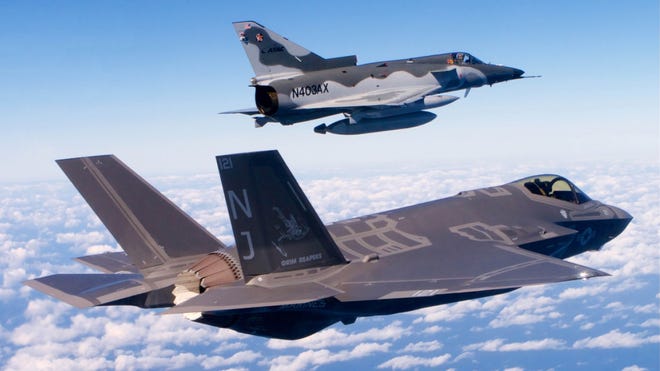
20. Textron
• Country: United States
• Arms sales: $4.1 billion
• Total sales: $14.2 billion
• Profit: $1.2 billion
• Employees: 35,000
Textron, based in Providence, Rhode Island, is one of 11 American companies to rank among the world's largest defense contractors. The company ranks 20th among companies profiting the most from the war in 2017 with $4 billion in arms sales through its subsidiaries, which include Bell Helicopter and Textron Systems.
Though the majority of Textron's revenue comes from deals in the United States and Canada, the company also does business in the Middle East, Asia, and Europe. Textron's defense products include armored vehicles, unmanned aircraft, and attack helicopters.
The day's top stories, from sports to movies to politics to world events. Delivery: DailyYour Email
While it is one of the largest defense companies in the world, over 70 percent of Textron's revenue comes from commercial deals. The company's non-military subsidiary aircraft brands include Cessna and Beechcraft.
19. Naval Group
• Country: France
• Arms sales: $4.1 billion
• Total sales: $4.2 billion
• Profit: $36.5 million
• Employees: 13,429
French industrial conglomerate Naval Group sold $4.1 billion worth of arms in 2017, among the most of any company worldwide. One of the oldest companies on this list, Naval Group's business activities date back to the early 17th century, when the group built the French Navy's Mediterranean and Atlantic fleets. Today, the Naval Group is the leading provider of naval defense systems in Europe.
Some of the major innovations throughout the company's history include the launch of La Gloire, the first ironclad steam frigate, in 1858, and the launch of Le Redoutable, the first ballistic nuclear submarine, in 1967. In recent years, some of the company's most lucrative contract work has included the delivery of the FREMM Tahya Misr frigate to the Egyptian Navy, completed in 2015, and a commitment to build 12 submarines for the Royal Australian Navy, awarded in 2016.
18. Leidos
• Country: United States
• Arms sales: $4.4 billion
• Total sales: $10.2 billion
• Profit: $242.0 million
• Employees: 31,000
Nearly half of the $10.2 billion in revenue of Virginia-based technology company Leidos in 2017 came from its defense and intelligence division. The company's services include IT infrastructure, data analytics, cyber security, logistics, surveillance vehicle and equipment development and maintenance, and consulting. Its defense clients include the U.S. Air Force, Army, Navy, and NATO.
Though the majority of the company's revenue comes from contracts outside of the defense industry, the company's history with the federal government goes back almost to its founding in 1969. The following year, Leidos won a contract with the Defense Nuclear Agency, now known as the Defense Threat Reduction Agency.
17. Rolls-Royce
• Country: United Kingdom
• Arms sales: $4.4 billion
• Total sales: $19.3 billion
• Profit: $5.3 billion
• Employees: 50,000
Rolls-Royce Holdings is separate from Rolls-Royce Motor Cars, the luxury automobile manufacturer, having sold the Rolls-Royce brand name and logo to the German group BMW in 1998. While Rolls-Royce Holdings sold $4.4 billion worth of military products and services in 2017 – making it the 17th largest defense contractor in the world – weapons manufacturing accounts for a relatively small share of the company's total revenue. Today, the largest share of Rolls-Royce Holdings' revenue comes from civil aerospace, followed by power systems, defense aerospace, marine, and nuclear technology.
Some of Rolls-Royce's major defense contracts in 2017 included renewals with the U.S. Department of Defense for supporting approximately 3,000 engines on aircraft such as the C-130 Hercules and T-45 Goshawk, and engine orders from the Japanese Self-Defense Force for its new V-22 Osprey fleet.
16. Honeywell International
• Country: United States
• Arms sales: $4.5 billion
• Total sales: $40.5 billion
• Profit: $1.7 billion
• Employees: 114,000
New Jersey-based Honeywell International sells its software and consulting services in a range of industries, including health care, oil and gas, manufacturing, and industrials. In addition, defense contracts accounted for about 11 percent of the company's 2017 revenue. For decades, Honeywell has had a contract with the U.S. Army to develop longer-range weapons systems, operating systems for unmanned aerial vehicles, and missile navigation systems.
The company has also manufactured over 6,000 T55 engines, which the Army uses in its iconic heavy-lift Chinook helicopter. The company has an ongoing partnership with the Army for maintaining and overhauling the engines.
Honeywell has defense contracts with foreign governments as well, inking a deal with the U.K. in 2016 to install navigation systems in the British Army's AJAX armored fighting vehicles.
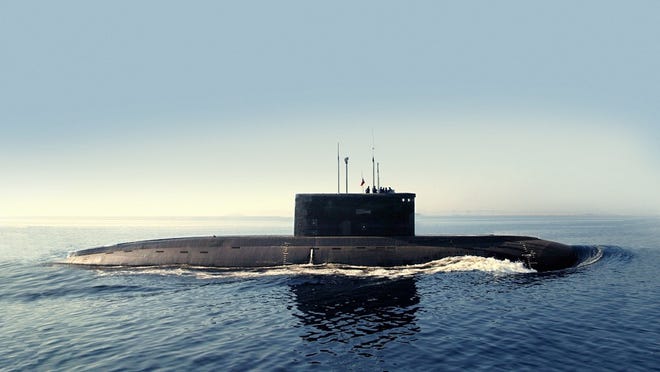
15. United Shipbuilding Corp.
• Country: Russia
• Arms sales: $5.0 billion
• Total sales: $5.6 billion
• Profit: $101.0 million
• Employees: 80,000
The United Shipbuilding Corporation was established in March 2007 in accordance with a decree from Russian President Vladimir Putin. The state-owned defense contractor sold $5.0 billion worth of arms in 2017, the third most of any Russian company and among the most of any worldwide. Arms sales accounted for 89 percent of USC's total revenue for the year.
In July 2014, USC was added to a list of companies banned from doing business in the United States by the U.S. Department of the Treasury. The sanctions were imposed in response to Russia's continued support for separatists in eastern Ukraine.
14. United Aircraft Corp.
• Country: Russia
• Arms sales: $6.4 billion
• Total sales: $7.7 billion
• Profit: $325.3 million
• Employees: 98,000
Since the breakup of the Soviet Union in 1991, Russia has been transitioning to a privatized economy. The defense industry, however, remains almost entirely state-owned. The United Aircraft Corporation was established by decree of Russian President Vladimir Putin in early 2006. While the company manufactures civil and special purpose aircraft, over 80 percent of its $7.7 billion in revenue in 2017 came from arms sales. UAC's military aircraft include MiG, Sukhoi, and Yak fighter jets. Though based in Russia, UAC has partners in India and Italy.
13. Huntington Ingalls Industries
• Country: United States
• Arms sales: $6.5 billion
• Total sales: $7.4 billion
• Profit: $479.0 million
• Employees: 38,000
Shipbuilder Huntington Ingalls Industries of Newport News, Virginia, is the sole manufacturer of nuclear-powered aircraft carriers in the United States and is responsible for 70 percent of the U.S. Navy's current marine fleet. According to SIPRI, HII brought in $6.5 billion in defense revenue in 2017, the eighth most of any U.S. company and the 13th most worldwide.
Some of the major contracts awarded to HII in 2017 included upgrades to the Arleigh Burke-class guided-missile destroyer Jack H. Lucas, development of the U.S. Navy's new Columbia-class submarines, and providing nuclear waste cleanup services at the Los Alamos National Laboratory in New Mexico.
In addition to manufacturing nuclear-powered aircraft carriers and submarines, surface combatants, amphibious assault and transport vehicles, and Coast Guard Cutters, HII offers technical solutions services in such fields as information technology and oil and gas engineering. Non-defense-related activities accounted for 13 percent of HII revenue in 2017.
12. L-3 Technologies
• Country: United States
• Arms sales: $7.8 billion
• Total sales: $9.8 billion
• Profit: $693.0 million
• Employees: 31,000
L-3 Communications changed its name to L-3 Technologies on Dec. 31, 2016. The $7.8 billion in arms sales the company made in 2017, according to SIPRI estimates, was effectively unchanged from the previous year. The company's operations include intelligence, surveillance, and reconnaissance products and services in the United States, Canada, Europe, and Australia.
The company's communication technology is integrated into the Predator and Global Hawk drones and is used in U.S. Army communication infrastructure. L-3 also designs power distribution systems and communication technology used by the U.S. Navy's Virginia-class submarine.
in 2017, contracts with foreign governments totaled $1.4 billion in sales, a fraction of the $6.3 billion in contracts L-3 had with the Department of Defense.
11. United Technologies Corp.
• Country: United States
• Arms sales: $7.8 billion
• Total sales: $59.8 billion
• Profit: $4.9 billion
• Employees: 240,000
Largely through its subsidiary brands Collins Aerospace and Pratt & Whitney, United Technologies is one of the largest defense contractors in the world. Collins Aerospace designs and sells advanced systems for military helicopters, including rescue hoists, autopilot systems, and laser-guided weapon warning systems.
Pratt & Whitney designs and manufactures engines currently in use by 34 militaries worldwide. In the U.S. military, the F-22 Raptor, F-16, and F-15 fighter jets, as well as the C-17 Globemaster III, are just a few examples of military aircraft powered by Pratt & Whitney engines.
In late 2018, United Technologies announced plans to split into three independent companies. The company's defense division will remain under the United Technologies name, while the Otis Elevator Company and Carrier HVAC Company will break off as independent entities.
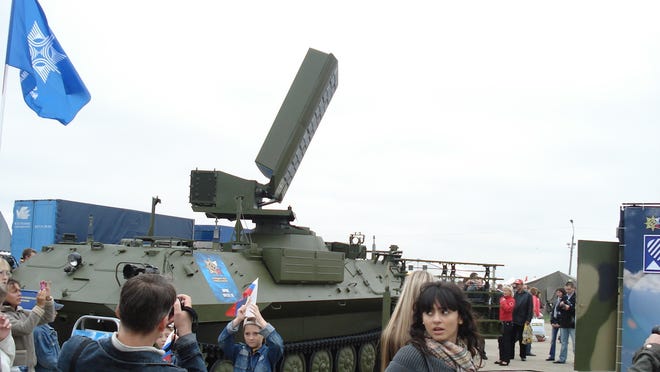
10. Almaz-Antey
• Country: Russia
• Arms sales: $8.6 billion
• Total sales: $9.1 billion
• Profit: $422.6 million
• Employees: 129,000
Established in 2002 under the direction of Russian President Vladimir Putin, Almaz-Antey is the largest known state-owned defense contractor, as measured by revenue, in the world. Almaz-Antey primarily manufactures surface-to-air missile systems for use by the Russian military. Due to increasing domestic and foreign demand, Almaz-Antey's arms sales rose 17 percent from 2016 to 2017, one of the largest increases of any defense company.
The Moscow-based contractor had $8.6 billion in arms sales in 2017, according to SIPRI. This was the most of any Russian company and the 10th most worldwide – the highest position occupied by a Russian company since SIPRI began tracking international arms sales.
In July 2014, Almaz-Antey was added to a list of companies banned from doing business with the United States by the U.S. Department of the Treasury. The sanctions were imposed against the company for its involvement in Russia's continued support for separatists in eastern Ukraine and occupation of Crimea.
9. Leonardo
• Country: Italy
• Arms sales: $8.9 billion
• Total sales: $13.0 billion
• Profit: $310.3 million
• Employees: 45,134
Named after the Tuscany-born Renaissance man, Leonardo is the only Italian company to rank among the world's largest defense contractors. The company has products and services in multiple branches of defense, including land and naval electronics, information systems, helicopters, jet aircraft, and unmanned aerial vehicles. Leonardo also manufactures weapons systems, torpedoes, and ammunition for naval and land artillery. Leonardo products and services are used in 150 countries. After Italy, the company's largest customers are the U.K., U.S., and Poland.
8. Thales
• Country: France
• Arms sales: $9.0 billion
• Total sales: $17.8 billion
• Profit: $931.1 million
• Employees: 65,000
This Paris-based contractor, which offers products and services in land, air, sea, and cyber defense, went from the world's ninth-largest defense contractor in 2016 to eighth-largest in 2017 after its total arms sales jumped 7 percent from $8.4 billion to $9.0 billion. Late last year, the company announced a deal with the French Navy to install seven new radar systems on frigates for missile fire control. When released, 2018's figures may show even more growth for the company. As of the first quarter of 2018, the value of all orders increased 34 percent from the first quarter of 2017.
7. Airbus Group
• Country: Trans-European
• Arms sales: $11.3 billion
• Total sales: $75.2 billion
• Profit: $3.3 billion
• Employees: 133,671
Though the company's primary business is in commercial and private aircraft, Airbus is the second largest defense contractor in Europe. Airbus has taken orders for over 600 of its Eurofighter Typhoon jet from a number of countries, including Austria, Saudi Arabia, Kuwait, and Qatar. The company has also taken hundreds of orders for its A400M and C295 transport aircraft.
Airbus makes secure communication devices for a client list that includes NATO and the French Navy. Like many other companies on this list, Airbus is involved in cybersecurity and has worked with defense departments of countries across Europe to protect vulnerable systems from cyber threats.
6. General Dynamics Corp.
• Country: United States
• Arms sales: $19.5 billion
• Total sales: $31.0 billion
• Profit: $2.9 billion
• Employees: 105,600
Incorporated in 1952, General Dynamics has sold a wide range of armaments, including missiles, warships, submarines, and rockets to all branches of the U.S. military since its beginning. In 2017, the Falls Church, Virginia, the contractor sold $19.5 billion worth of arms, the fifth most of any U.S. company and the sixth most of any company worldwide. In 2017, the company received a $5.1 billion contract to design and develop a prototype of the Columbia-class submarine and delivered the latest iteration of the Abrams tank to the U.S. Army.
GD is also the company behind the new Arleigh Burke-class Destroyer and Zumwalt-class guided-missile destroyer, developed and built at its plant in Bath, Maine. Like a number of other companies on this list, GD also provides communications, IT, and cyber security products and services.

5. Northrop Grumman Corp.
• Country: United States
• Arms sales: $22.4 billion
• Total sales: $25.8 billion
• Profit: $2.0 billion
• Employees: 85,000
The company now known as Northrop Grumman was founded in Hawthorne, California, in 1939. The company built its first aircraft, the N-3PB patrol bomber, for the Norwegian Air Force in 1940, and it has since expanded into four primary business sectors: aerospace systems, innovation systems, mission systems, and technology services.
Northrop Grumman pioneered the Flying Wing concept – an aircraft with no tail or definitive fuselage in which most of the crew, payload, and equipment is situated in the main wing structure – and incorporated the technology in its B-2 stealth bomber line.
According to SIPRI, Northrop Grumman made $22.4 billion in arms sales in 2017, the fourth most of any company in the United States and the fifth most of any company worldwide. Some of the major contracts won by Northrop Grumman in 2017 include a $750 million deal to provide maintenance services for the U.S. Army's Special Electronic Mission Aircraft fleet and a $265 million deal to provide maintenance and logistics support for the U.S. Air Force's Battlefield Airborne Communications Node system.
4. BAE Systems
• Country: United Kingdom
• Arms sales: $22.9 billion
• Total sales: $23.5 billion
• Profit: $1.1 billion
• Employees: 83,200
BAE Systems is the largest defense contractor based in the United Kingdom and the fourth largest in the world. The company builds ground combat vehicles – including the Challenger 2, the main battle tank for both the British Army and Royal Army of Oman – for different situations and clients.
The company is also in the early years of a decade-long contract with the U.K.'s Royal Air Force to support its fleet of Typhoon fighter jets, and it is assisting in the continued development of the F-35 fighter jet in a partnership with U.S. companies Northrop Grumman and Lockheed Martin.
While many other companies on this list also have lucrative deals with private and commercial clients, 98 percent of BAE Systems' 2017 revenue came from arms deals.
3. Raytheon
• Country: United States
• Arms sales: $23.9 billion
• Total sales: $25.3 billion
• Profit: $2.0 billion
• Employees: 67,000
The third largest defense contractor in the world, Raytheon is a missile defense and long-range precision weapons maker headquartered in Waltham, Massachusetts. Through customers in over 80 countries, the company reported $25.3 billion in revenue in 2017, 94 percent of which came from arms sales and defense contracts.
The United States and many of its allies rely on the company's radars and ballistic missile interceptors as part of its defense strategy. Raytheon also makes a wide range of air-to-surface, surface-to-air, air-to-air, and surface-to-surface precision-guided missiles, in addition to bombs, torpedoes, and tactical small-arms sights.

2. Boeing
• Country: United States
• Arms sales: $26.9 billion
• Total sales: $93.4 billion
• Profit: $8.2 billion
• Employees: 153,000
Boeing made $26.9 billion in arms sales in 2017, according to SIPRI, the second most of any company worldwide. Defense contracts accounted for 29 percent of Boeing's revenue, a far smaller share than most companies among the world's 10 largest military contractors. A bulk of Boeing's revenue comes from commercial aircraft such as the 737, 747, 767, 777, and 787 families. In 2017, Boeing completed 763 commercial aircraft deliveries – an industry record – and won over 900 orders to grow its order backlog to a total of 5,864 airplanes.
Boeing won in 2017 the first international order, from Japan, of a KC-46 aerial refueling aircraft, whose design is based on the commercial 767 airplanes. Other major defense contracts and continuations of previous contracts won by Boeing in 2017 include the manufacturing of 27 P-8 Poseidon aircraft, 36 advanced F-15 fighters, and 268 Apache helicopters.
1. Lockheed Martin Corp.
• Country: United States
• Arms sales: $44.9 billion
• Total sales: $51.0 billion
• Profit: $2.0 billion
• Employees: 105,000
Lockheed Martin is by far the largest defense contractor in the world. In 2017, the Bethesda, Maryland, company made $44.9 billion in arms and defense contracts, nearly twice the amount of arms sales at Boeing, the second-largest defense contractor. The company makes a wide range of military aircraft, including the F-16, F-22, and F-35 fighter jets, as well as sonar technologies, ships, missile defense systems, and missiles used by the Navy. More than $35 billion of Lockheed Martin's arms sales in 2017 came from the U.S. government, more than the entire budget of the Internal Revenue Service and Environmental Protection Agency combined.
Net sales are expected to have climbed even higher in fiscal 2018. In late 2018, the company was awarded a $22.7 billion contract for 106 F-35 fighter jets for the U.S. military and another 89 for all nations.
24/7 Wall Street is a USA TODAY content partner offering financial news and commentary. Its content is produced independently of USA TODAY.

